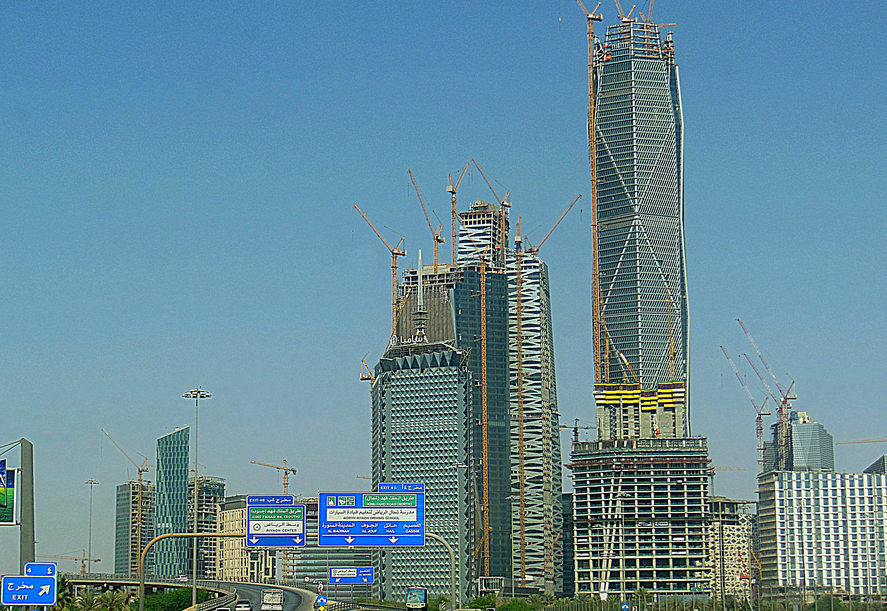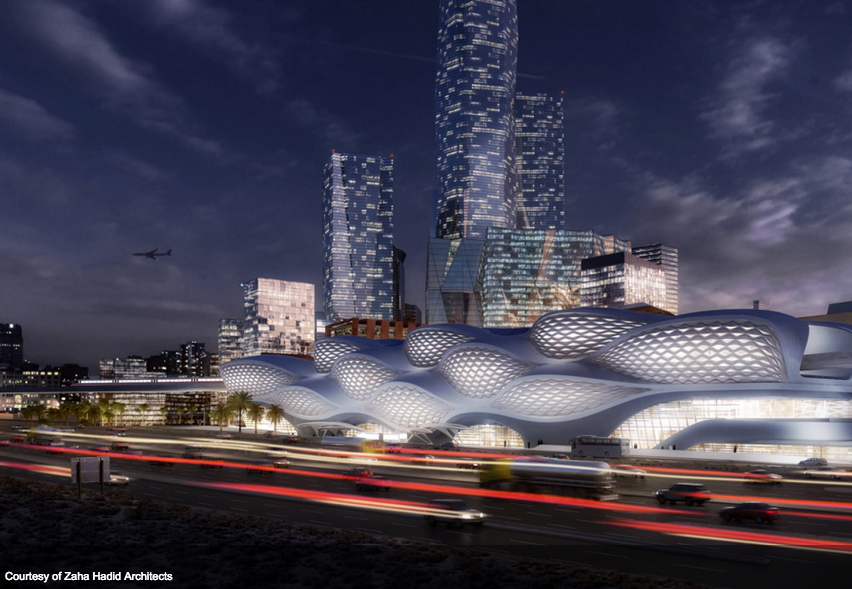A date has been set for a “soft opening” of Saudi Arabia’s King Abdullah Financial District, a mega project in Saudi Arabia’s capital city that has been under construction for years.
Situated on the outskirts of Riyadh, the new development bears the name of a King who has steered a nation through a period of economic transformation and growth. In many ways, the district is a symbol of the new Saudi Arabia. It is brand new, expensive, and still unfinished, but it’s potential impact can be seen on the horizon.
Though behind schedule and still only partially complete, the round-the-clock flicker of welding torches has become a common site for Riyadh’s citizens as authorities hurried to bring the city to the finish line.
Few developments have changed the face of Riyadh, a city growing so quickly that cranes are visible in virtually every direction, quite like the King Abdullah Financial District. Visible on a clear day from the Kingdom Tower and the Al Faisaliya tower, the new large-scale construction project may change the gravity of the city from its traditional center.
Writing in the New York Times in 2010, Nicolai Ouroussof noted that the design of KAFD “blends elements of Wall Street, La Défense in Paris, and Canary Wharf in London into a kind of generic financial theme park.”
The city’s purpose is to serve as the Gulf’s financial hub in the heart of its largest economy. Like many things in Saudi Arabia, success will require more than the construction of the buildings. The city will create a new set of challenges to accompany the promise and opportunity of the city. As businesses and residents move into the area, traffic patterns and demand for transportation infrastructure will grow. KAFD is slated to receive a station on Riyadh’s forthcoming metro mega project, due for completion in 2017. The design for that metro station was awarded last year to a female architect Zada Hadid, who also designed London’s Aquatics Center for the 2012 Olympics.
With the news that Saudi Arabia would open its bourse to increased foreign investment, the timing of the soft opening is ideal. At a cost of $7.8 billion, the 34 towers and 1.6 million square meters of office space will flood the Saudi commercial and residential real estate market. Saudi Arabia’s Capital Markets Authority (CMA) and Samba have also reportedly leased spaces in the financial district.
Speaking with Ouroussof in the New York Times, the lead architect and partner at Hennings Laarsen in charge of the project, said that the design guidelines “say nothing about the separation of the sexes…None of the religious issues came into the design in any way…They want to attract a bit of both Westerners and young Saudis who have traveled abroad, in order to integrate them.”
Arab News, which reported the soft launch of the project yesterday, cited a source that said engineers and workers affiliated with one of KAFD’s large contractors “are busy these days in preparations for the event with finishing touches on the landscape and other projects being made.”
That article also noted the challenge that a glut of office space will serve to Riyadh authorities: “A big problem is its size. The Saudi economy may be doing well on the back of high oil prices but not so well that its businesses could easily digest all the extra property.”










